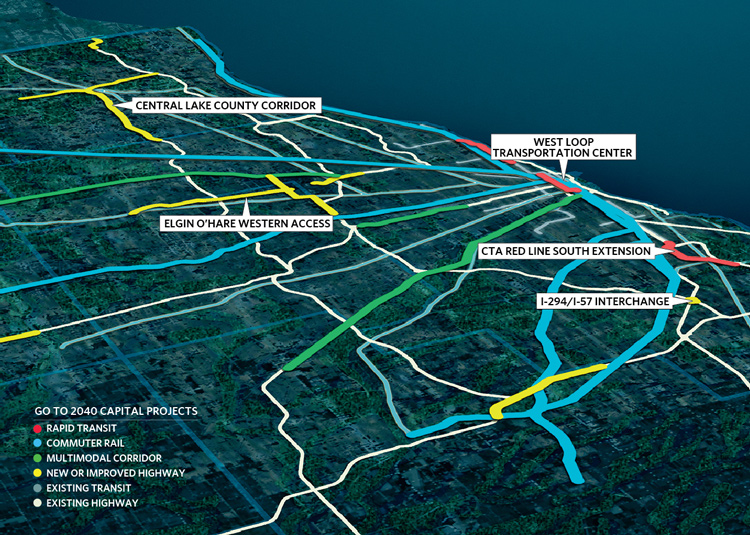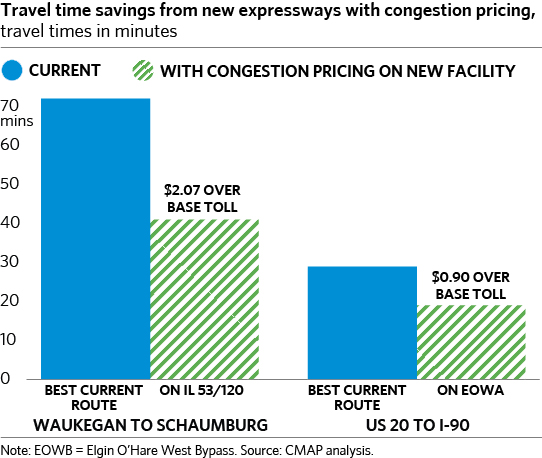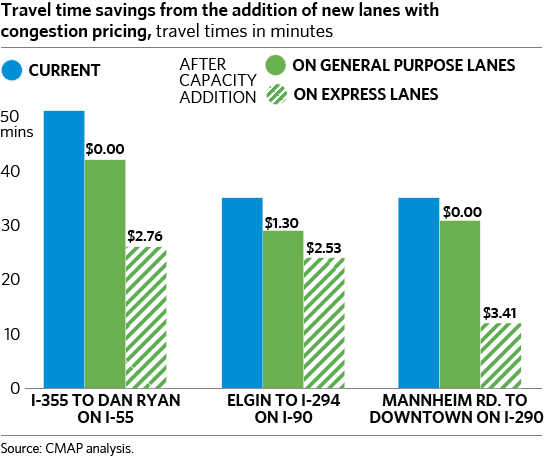MetroPulse Main Navigation with Logo
metropulse - Invest Strategically in Transportation
Invest Strategically in Transportation
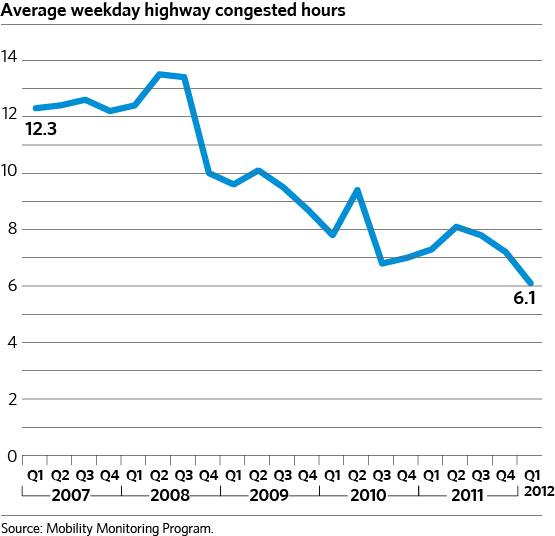
Our transportation infrastructure is key to the region's prosperity, yet it has fallen behind other industrialized parts of the world, many of which have invested significantly to create and preserve modern, world-class systems.
CMAP urges the federal government, the State of Illinois, transit agencies, and local governments to develop innovative financing to support a world-class transportation system for this new century. The "costs of congestion" are real and serious, and include lost time and fuel, decreased productivity, inefficient freight movements, and pollution.
Regarding expenditures, GO TO 2040 recommends that funds for transportation need to be allocated more wisely, using performance-driven criteria rather than arbitrary formulas. Transportation implementers should prioritize efforts to maintain, enhance, and modernize the existing system, and expensive new capacity projects should be built only if they yield benefits that outweigh their costs. Examples of enhancements and modernizations that should be pursued include more attractive and comfortable buses and trains that improve the passenger experience, better traveler information systems, targeted transit extensions and arterial improvements, and multimodal approaches such as integrating bicycling and pedestrian accommodations in roadway design.
Congestion
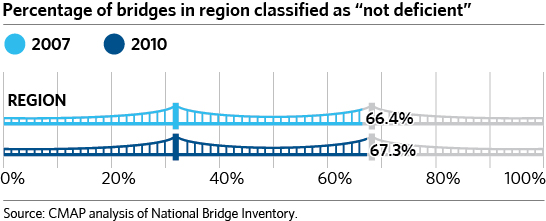
The Metropolitan Planning Council has pegged congestion's annual cost in our region at $7.3 billion. Performance of our region's transportation system can be measured by tracking highway congestion. While this chart shows a promising trend, it is largely attributable to the economic slow-down, and our region remains one of the nation's most-congested. Congestion must be reduced by implementing GO TO 2040's recommended land use pattern and the plan's targeted improvements, expansions, and other strategies for managing traffic.
In late 2012, CMAP began a campaign urging Governor Quinn and leadership of the Illinois Department of Transportation (IDOT) and the Illinois Tollway to implement congestion pricing to manage traffic on five new expressway projects approved in GO TO 2040. Already used by 10 other states, congestion pricing gives travelers the option of an express toll lane that ensures reliable travel times. Express tolls rise and fall based on demand at various times of day, and drivers choose when to use the lanes based on variable cost. See cmap.illinois.gov/congestion-pricing.
metropulse - Increase Commitment to Public Transit
Increase Commitment to Public Transit
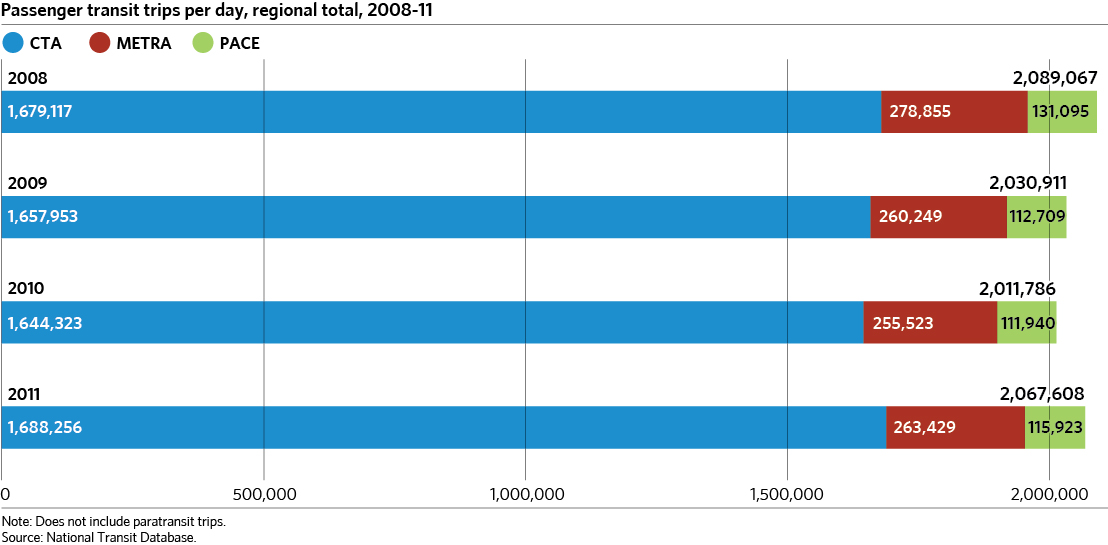
GO TO 2040 calls for improvements to the region's transit system. This requires attention to not just how transit operates, but how it is perceived. The region clearly needs transit services that function well, with on-time, frequent service and seamless transfers, but also must address the issues of perception that make transit the option of last resort to many people.
A strong transit system benefits the region's economy, environment, and quality of life by providing residents with transportation choices and helping to lower congestion. However, transit use has not kept pace with the region's growth, and ridership is actually lower than it was 20 years ago. Decades of underinvestment have left the region's transit system with aging infrastructure in need of basic maintenance and improvements, as well as demands for expansion to areas that do not have transit service today.
Strengthening Transit
With a strong transit system, residents have more choices concerning where they can live and work and how they travel, and can avoid the harmful effects of congestion. Using transit is less expensive for an individual than owning and maintaining an automobile, and transit systems provide important travel options for lower-income residents.
GO TO 2040 set ambitious goals of 2.3 million transit trips per weekday by 2015 and 4 million by 2040. As shown in this chart, the number of transit trips increased somewhat in 2011 after two straight years of slight decline. Because these goals are a central strategy for reducing congestion, enhancing livability, improving air quality, among other important regional objectives, we need a renewed regional commitment to making sure that transit is the first option for more residents to get around, rather than the last.
Population and Jobs with Transit Access
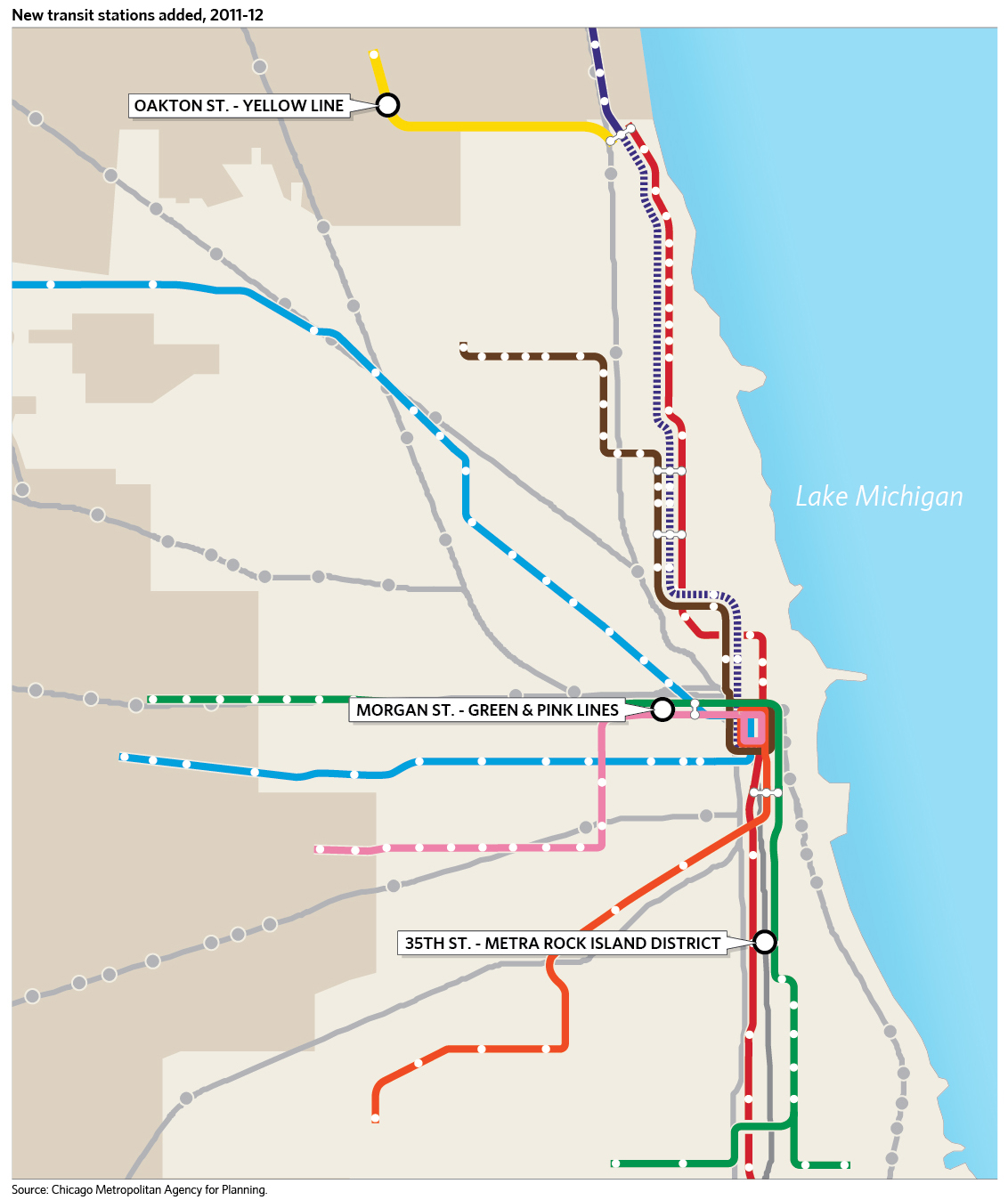
GO TO 2040 seeks to improve transit access so more people may live and work within walking distance of these services. Since the plan was adopted, three new rail stations have opened, increasing connectivity between transit system assets and enhancing mobility for residents of the region:
Metra Rock Island District 35th St. Station. Opened April 2011, in Chicago's Bronzeville neighborhood, just east of the Dan Ryan Expressway. Easy access to the Illinois Institute of Technology and U. S. Cellular Field. Close proximity to the CTA's Green and Red Lines.
CTA Yellow Line Oakton St. Station. Opened April 2012 in Skokie. Provides an important intermediate stop between the existing termini at Dempster and Howard. Close proximity to Oakton Community College. Through the Howard station, the Yellow Line connects passengers to the Red and Purple Lines, which serve high-demand destinations such as the Loop, Wrigley Field, and U. S. Cellular Field.
CTA Green and Pink Lines Morgan St. Station. Opened May 2012 at Morgan and Lake streets in Chicago. Located about half-way between the existing Ashland and Clinton stations, which are nearly 1.3 miles apart. Provides increased access to the thriving West Loop.
metropulse - Create a More Efficient Freight Network
Create a More Efficient Freight Network
Metropolitan Chicago's freight system links the region's industries and consumers to global markets. Highways, railroads, waterways, and airports all provide important connections to the world. Yet each of these modes of transport is intertwined with the livability of the region. Therefore, planning for an efficient, regional, multimodal freight system is a key priority of GO TO 2040.
GO TO 2040 strongly supports increased investment in the region's freight system. Investment will be required primarily by the private sector in the normal course of private business enterprise, but public investments will also be necessary to promote the economy, public health, safety, and welfare. The two goals of this increased investment should be to improve the economic competitiveness of industry in metropolitan Chicago and to reduce the impacts of freight operations on local communities, addressing travel delay, pollution, and safety.
CREATE
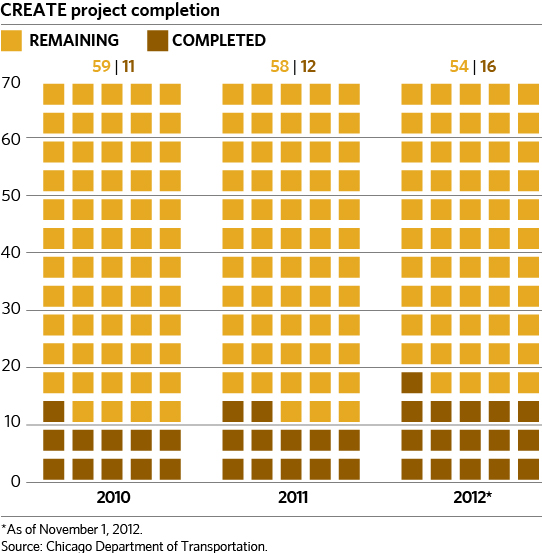
The Chicago Region Environmental and Transportation Efficiency (CREATE) program is a public-private partnership between the U.S. Department of Transportation, the State of Illinois, the City of Chicago, Metra, Amtrak, and the nation's freight railroads. Together, the partners identified and prioritized strategic rail infrastructure improvements to reduce congestion, especially grade-separation projects that help freight move efficiently and keep it from impeding travel by cars, trucks, and commuter rail.
Funding for future projects will continue to be a challenge, but four new CREATE projects were finished in 2012, bringing the overall total of completed projects to 16. Significant work is left ahead for the partnership, with 54 yet to be built from among a total 70 projects. Of the remaining projects, 21 are underway in various stages of design or construction.
Highway-Rail Crossing Delays
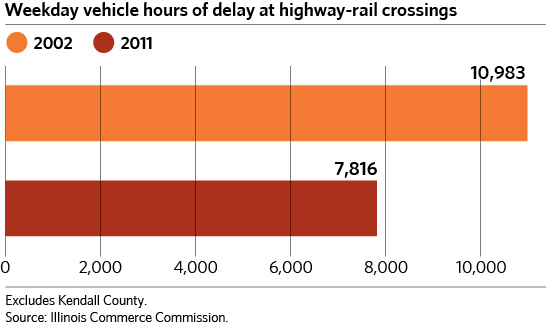
Railroad delay at highway-rail and rail-rail grade crossings is a major issue affecting highway users, passenger transport, and the freight rail industry itself. In addition to the economic impacts of delay and travel time reliability, grade crossing delay can be an issue for community emergency responders. Regionally, delays at highway-rail crossings have decreased significantly since 2002, driven by reductions in all counties -- especially in Cook.
